Irish Memorials in Canada
The Irish people form an important part of the backbone of this great land we call Canada. Their legacy lives on in their Irish-Canadian descendants, as numerous as the sand along the shores of a country they sought with hope. It is vital we not only acknowledge the influence this great people have had on the making of Canada, but we must commemorate, celebrate and teach our children. Irish memorials in Canada stand as that testament; iconic Celtic crosses, monuments, plaques, cairns, old Irish Catholic church graveyards and unmarked grave sites all speak to where the Irish died.
New Reference Book to Retell Canada’s Irish Legacy
After years of field research and follow-on study, Barbara and David Dickson are writing a book distilling their finding of over two hundred Irish memorials in Canada. Where The Irish Died pays tribute to the invaluable contributions made to Canada’s political, economic and social character by Irish immigrants during the 19th century.
Introduction
Throughout Canada’s history, brave, and many times desperate, Irish men, women, and children emigrated from their Emerald Isle looking for a better life.
During the 1820’s, thousands of strong, Irish “navvies” helped build the Rideau and Welland Canals. Over one thousand Irishmen died during the Rideau Canal’s construction, succumbing to the ravages of “ague” or “lake fever” (a malaria-like illness) transmitted by mosquitos and through on-site accidents.
Between 1847-1852, the Great Hunger sent upwards of half of the population of Ireland fleeing for their lives. In their weakened emaciated state, these poor people easily succumbed to the inhumane conditions found aboard immigration ships. Dubbed “coffin ships,” these horrid, putrid vessels, crammed packed with Ireland’s poorest were a breeding ground for disease, especially typhus which struck without warning, and discriminated against no one. It spread with a fury only matched by the terrible ocean storms that raged around it. Like sea foam sprayed across the worn wooden planks of the ships, diseases like typhus and cholera, slipped below deck, unnoticed, sowing their deadly seed. Many lost their lives before reaching their New World. Mothers and fathers were buried at sea; their children becoming orphans, facing a bleak future alone.
Those who survived the ocean crossing (many voyages taking over two months) had to survive detention at quarantine stations hastily set up on islands or outcroppings along Canada’s shorelines. Quarantine offered an outcome just as vile, just as dangerous, and just as deadly as life on board ship. During the summer of ’47, dozens of ships sat in the St. Lawrence, waiting days to disembark their destitute, diseased human cargo. Over 100,000 immigrants landed at Quebec that year, many already infected, or quickly becoming ill, condemned to death while waiting.
All around was a sea of ragged humanity, living and dying, waiting to be given a doctor’s blessing so that they could move on. Overworked, exhausted doctors had the authority to decide between life and death. If they felt an immigrant might be sick, regardless whether they truly were or not, they went into quarantine, many becoming infected and dying, their dreams forever interred in mass graves along with their remains. And if the same overworked doctor waved them on, not noticing the first subtle signs of typhus? These poor folk continued their westward journey, carrying disease with them, spreading the scourge and overwhelming their unsuspecting Canadian hosts.
The plight of the Irish people in times past is truly tragic.
But the way they have been remembered in Canada is equally tragic.
Irish memorials in Canada stand where the Irish lived and died, most often in socially and economically depressed areas. Some tributes are quite difficult to discover, even by the most earnest of seekers. Local citizens – from police officers to townsfolk, even historical societies — barely are aware of their existence.
Typically, couples vacation in Las Vegas, on a cruise ship or at the summer cottage. Barbara and her husband hop in the car to discover Canada’s Irish past by finding memorial sites where settlers, workers, militia, and immigrants lived, flourished, and, for some, perished.
Research trips have taken them from Windsor, Ontario to Quebec’s Eastern townships, from a much longer six-thousand-kilometre tour that circumnavigated Quebec, New Brunswick, Prince Edward Island and Nova Scotia, to driving from Port-Aux-Basques to Cape Spear in Newfoundland and Labrador. Such excursions provided an opportunity to discover and document Irish memorials in Canada; Celtic crosses, cemeteries, and memorials commemorating our intertwined British, Irish and French histories.
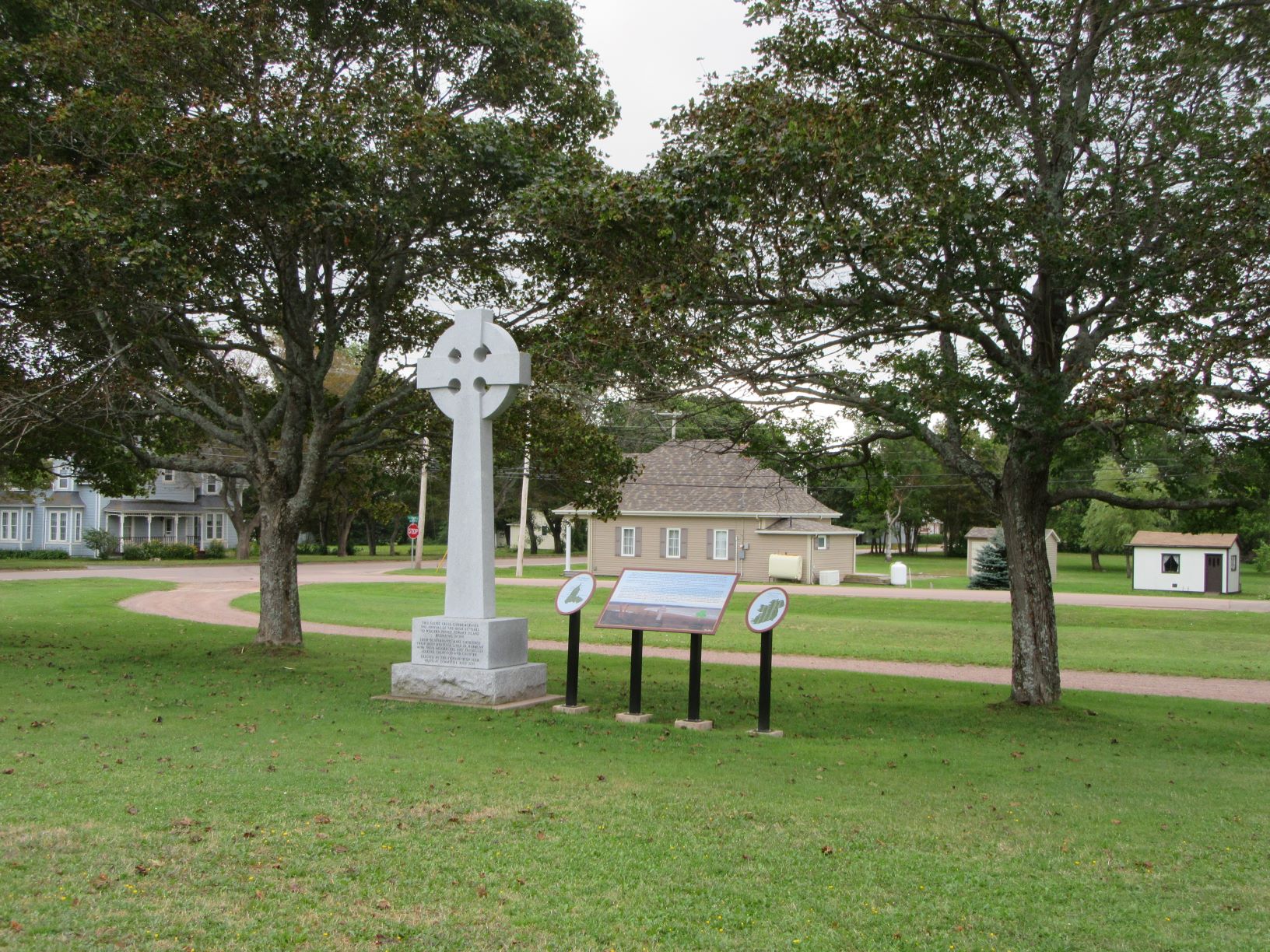
Irish Celtic Cross Memorial in Tignish, Prince Edward Island © Barbara Dickson
Through online research, they have expanded their knowledge of Irish history in searching for international memorial sites. This online research documented over one hundred and twenty memorials in Ireland, about two dozen in the United States and exactly three in Australia. These international memorials proved to be heart-rending reminders of the suffering that took place around the world especially during the famine years, rekindled in a myriad of masterful works of art, historic symbols and amazing locales.
The Dicksons also enjoy weekend trips to explore local Irish history. Just recently, they unexpectedly discovered a long bridge festooned with green four-leaf clovers. A fanciful discovery to say the least and, of course, a site immediately added to their list of symbolic Irish memorials.
Such research has uncovered well over two hundred Canadian Irish memorial sites of historic, cultural, and personal significance. Whether the locations have been found right under their noses, endlessly zigzagging over cemetery sites, or by walking unmarked forest trails, the result is a rich swath of undocumented nineteenth-century Canadian history.
Sadly, our Irish history can often be forgotten if not wholly ignored in Canada’s historical narrative..
The Irish people form an important part of the backbone of this great land we call Canada. Their legacy lives on in their Irish-Canadian descendants, as numerous as the sand along the shores of a country they sought with hope. It is vital we not only acknowledge the influence this great people have had on the making of Canada, but we must commemorate, celebrate and teach our children.
Hopefully, when the Dicksons get on the road again, they’ll have the pleasure to run into you along the way.
Sláinte!
A Sampling of Irish Memorials in Canada
Partridge Island, Saint John, New Brunswick:
Just offshore at the foot of Water Street in Saint John, New Brunswick lays Partridge Island, considered one of the best-kept historical secrets in the country.
Irish Memorial at St. Andrews-by-the-Sea, New Brunswick
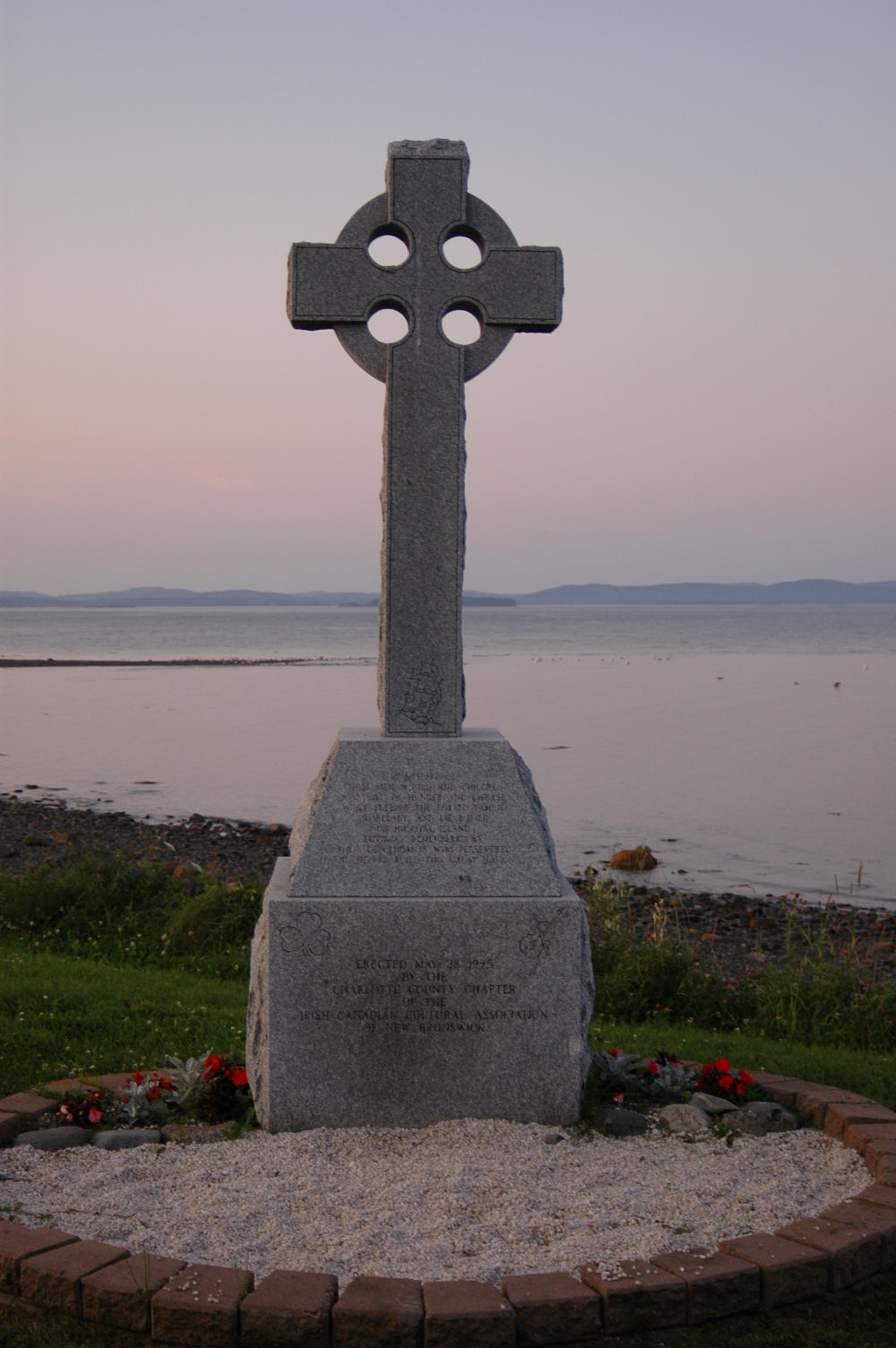
Irish Memorial at St. Andrews-by-the-Sea, New Brunswick © Barbara Dickson
Like Partridge Island in Saint John, just offshore the quaint village of St. Andrews-By-The-Sea, New Brunswick, lays Hospital Island, a quarantine station that was used extensively during the 1847 Irish Famine migration.
Irish Memorial at Grosse Ile, Quebec
Gerald Keegan, an Irish emigrant from Sligo, writes of that fateful summer in 1847 at Grosse Ile:
“They are calling now for volunteers to bring the sick and the dead to shore. The sailors are refusing to have anything to do with the task…I feel it my duty to render what will be my last service to these poor suffering creatures in offering myself as a volunteer…”
Black Rock, Irish Memorial, Montréal, Québec
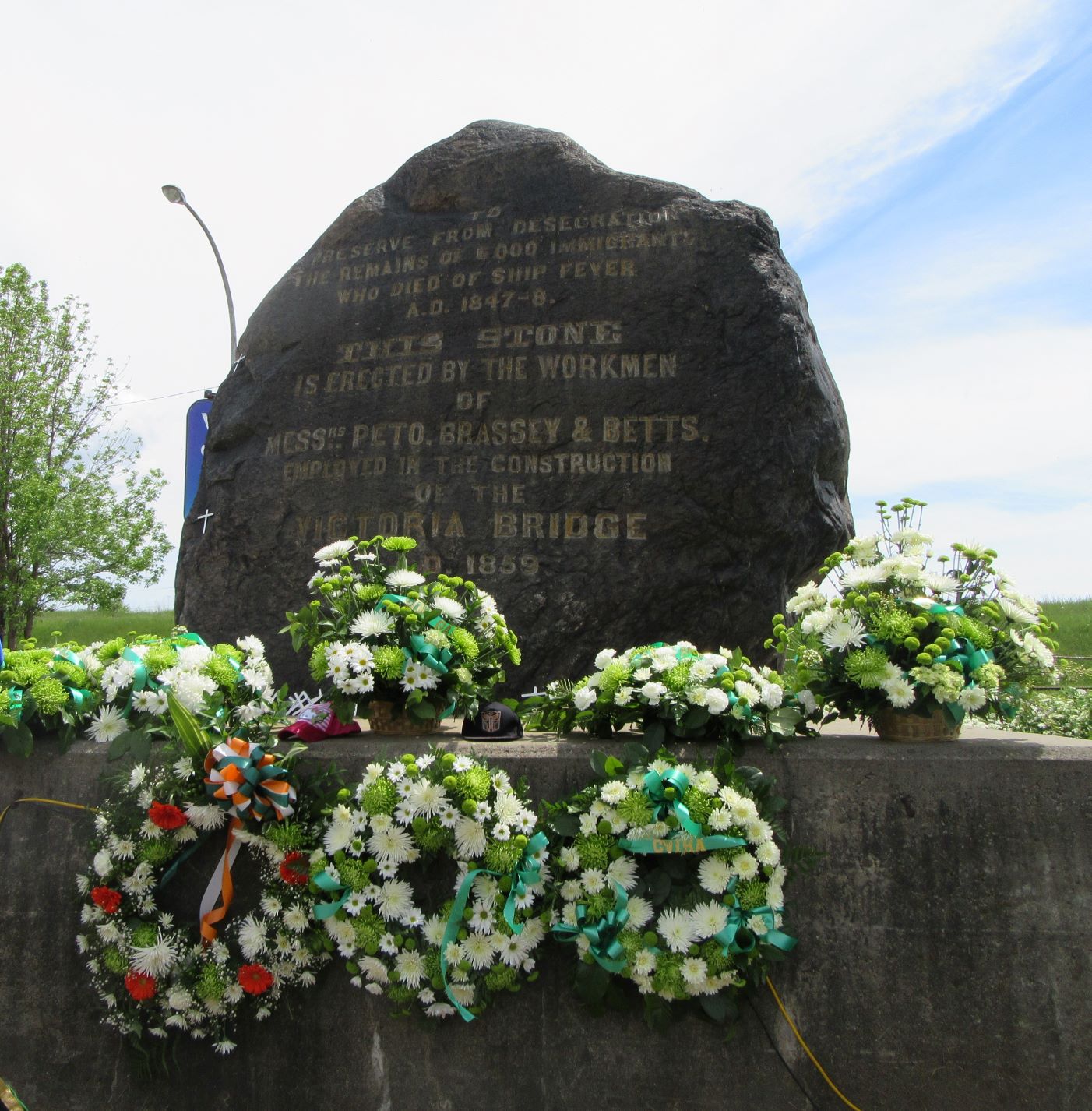
2017 – “Walk to the Rock” – Irish Memorial at Montreal, Quebec, Canada © Barbara Dickson
The Irish Memorial in Montréal, Québec sits on a busy stretch of highway along the edge of the St. Lawrence River in an industrial area of Old Montreal. It is not easily visited, given its isolated location. The monument is small and nondescript – a granite boulder carved with a commemoration of dedication to the six thousand Irish who died during the Great Hunger. Tragically, and shamefully, there is no cemetery. The remains of these suffering people lay under a parking lot
Toronto’s Ireland Park
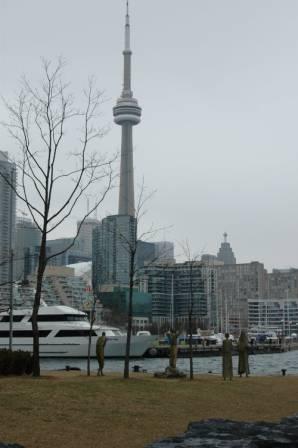
Toronto’s Skyline from Ireland Park in Toronto, Ontario © Barbara Dickson
Situated at 5 Eireann Quay, Ireland Park in Toronto, like other memorials scattered along the coast of the St. Lawrence River and Lake Ontario, stands eerily abandoned, and seemingly insignificant amidst luxurious condos and towering industrial silos at the foot of Bathurst Street on Toronto’s lakeshore.
Irish Memorial, Hospital Point, Peterborough, Ontario
Like other memorials along the majestic St. Lawrence River, the Irish Memorial in Peterborough is quite ordinary and unassuming, nothing like the extraordinary, impoverished people it commemorates.
Irish Memorial: 1873 Sinking of S.S.Atlantic, Terence Bay, Nova Scotia, Canada
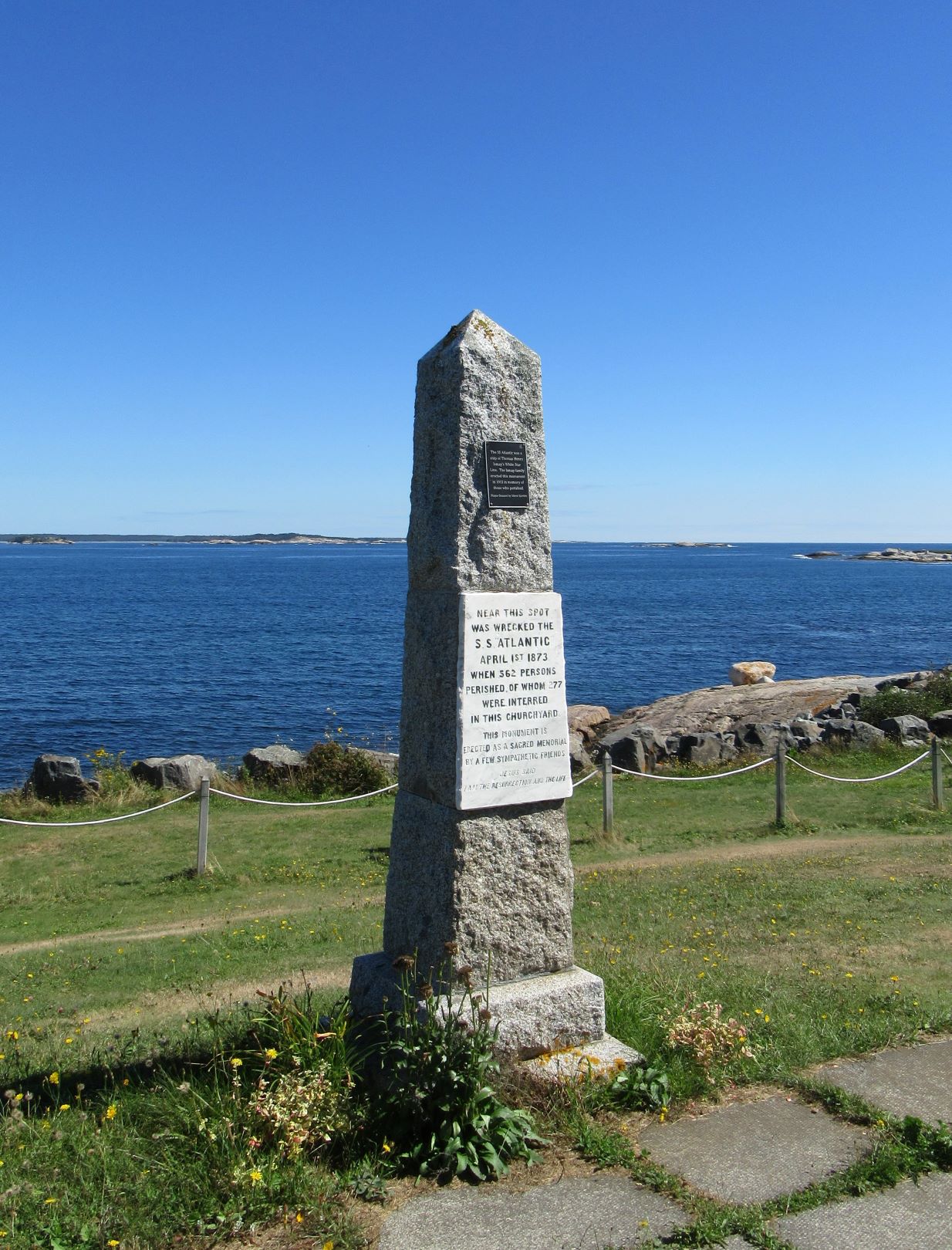
S.S. Atlantic Irish Memorial, Terence Bay, Nova Scotia, Canada © Barbara Dickson
The S.S. Atlantic, Ismay’s most popular passenger ship in his prestigious White Star Line, left Queenstown, Ireland on March 20, 1873, heading for New York. Battling fierce early spring storms off Nova Scotia’s coast, Captain Williams changed course for Halifax to wait out the rough seas. Tragically, the Atlantic would never make its destination. The ship crashed full speed onto Nova Scotia’s rocky shore at Lower Prospect Bay. Of 950 passengers and crew, 562 men, women and every child, save one small boy, died in the early morning hours of April 1, 1873.
Irish Memorial: Fenian Battle Site, Eccles Hill, Québec, Canada
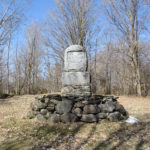
Eccles Hill Irish Fenian Battle Site Memorial, Quebec, Canada, 1873 © Barbara Dickson
Deep in the farthest reaches of Québec’s Eastern Townships close to Frelighsburg and literally feet from the border to the United States, Eccles Hill boasts a surprisingly large concrete monument situated in a cow pasture behind a nondescript steel gated fence. Below the national historic site’s monument just inside the gate, is a plaque recounting the disastrous Fenian raid that took place here.
Irish Memorial in Parc Irlandais, St. Timothée, Québec, Canada
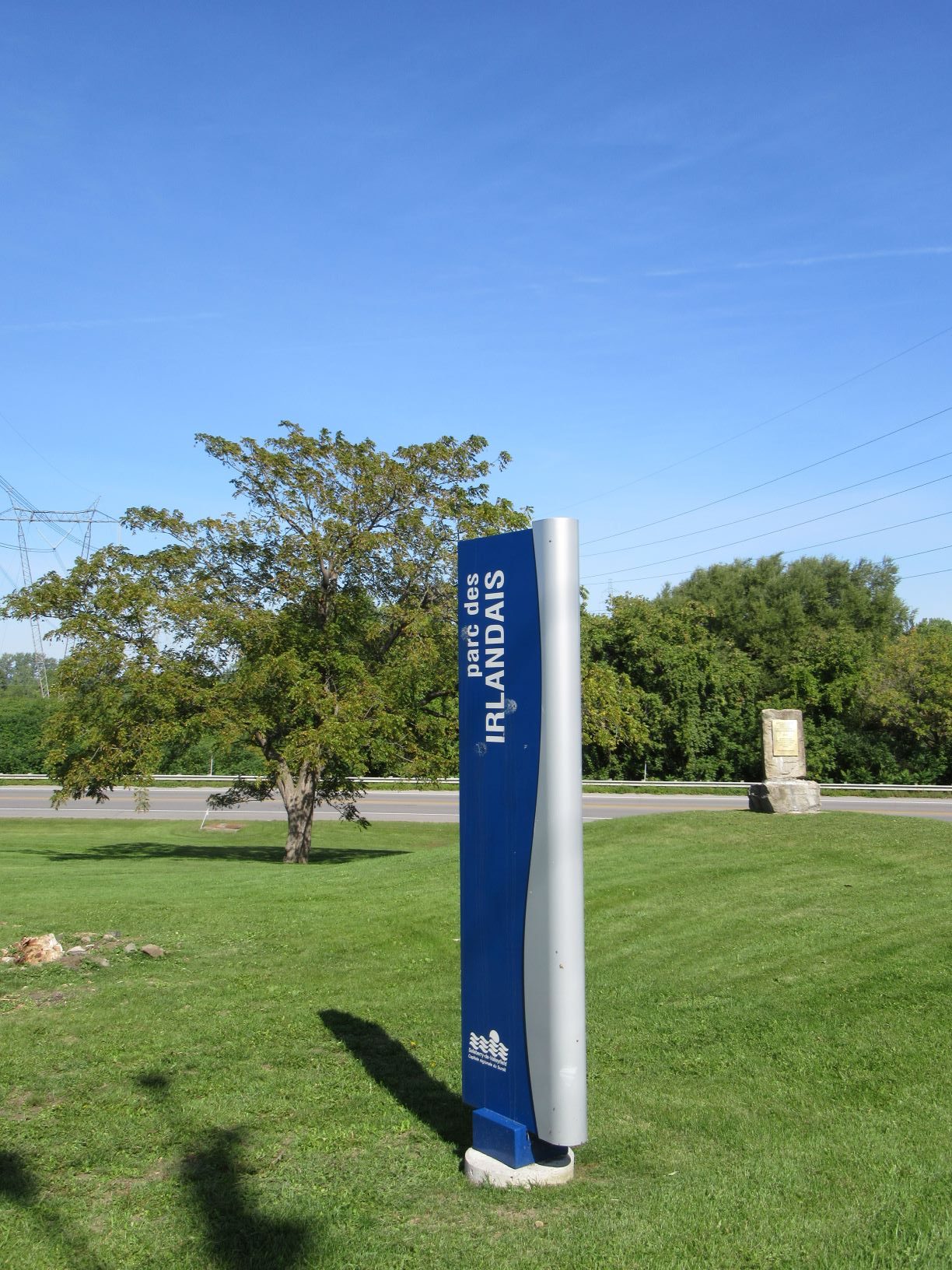
Irish Memorial – Labour Riot at Saint-Timothée, Québec © Barbara Dickson
A solitary rock memorial lies on a hill next to a derelict power station near Saint Timothée, Québec, on the southwest shore of Lake St. Louis. It commemorates a labour riot, perhaps the bloodiest in Canada’s past, between Irish canal workers, their private employer, and the British Army and cavalry.

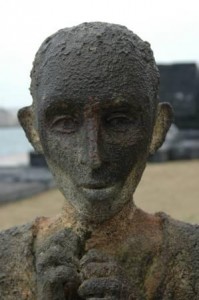
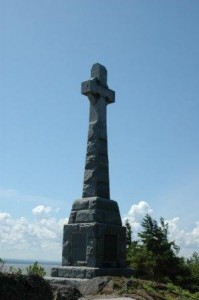
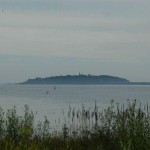


18 comments for “Irish Memorials in Canada”